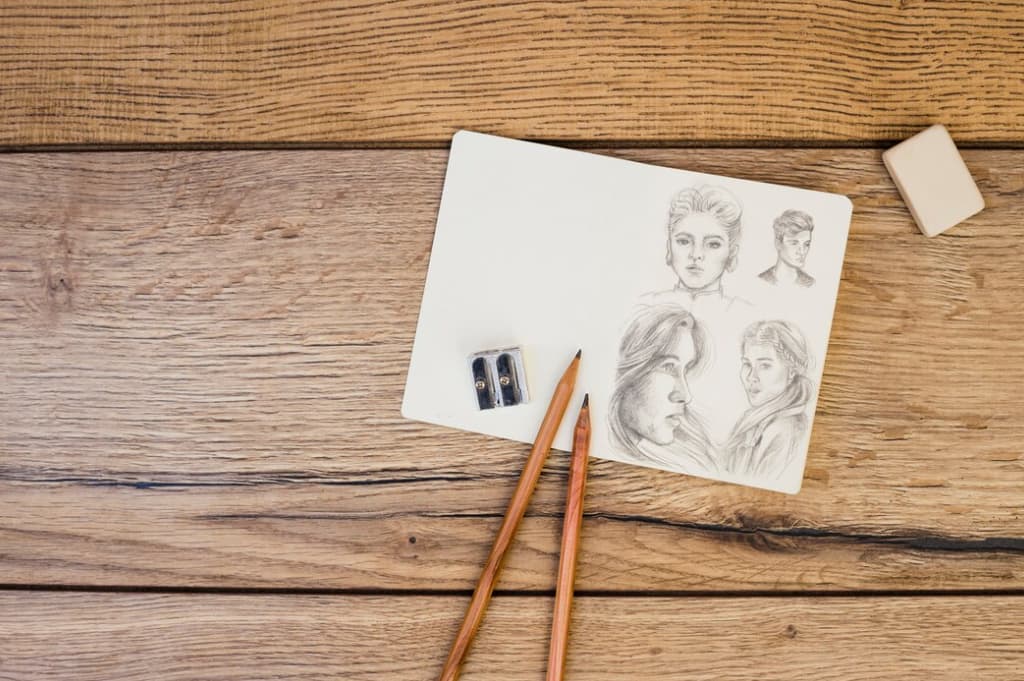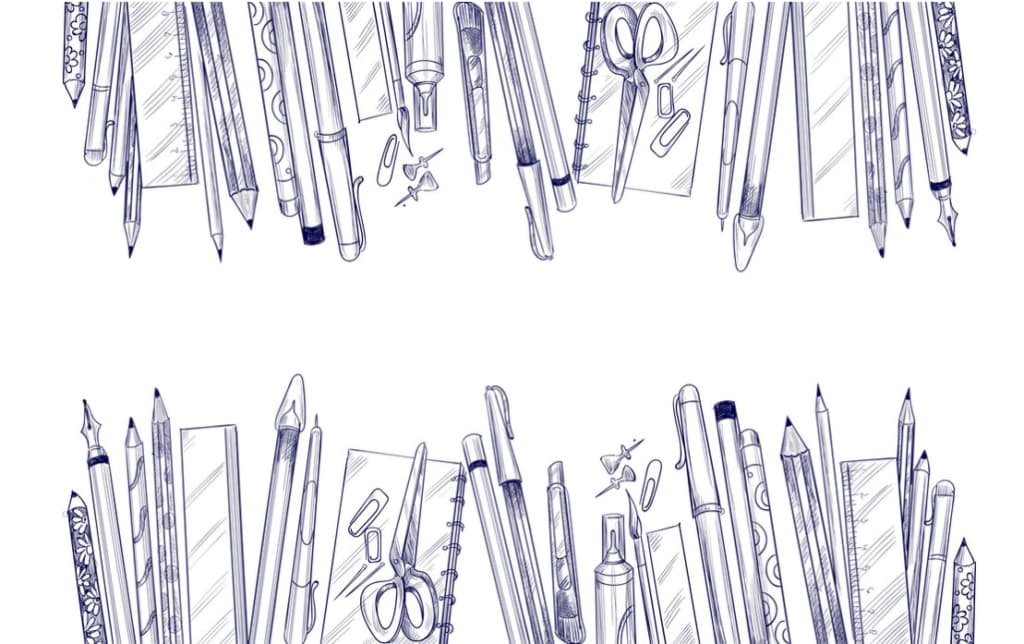Art enthusiasts often explore various mediums, and while painting has its charms, drawing, particularly with pencils and sketches, offers a distinct avenue for creativity. Originating from a background where pencil and charcoal drawings hold significant influence, artists can develop a keen sense of value and technique through these mediums. Many who favor vibrant colors and the therapeutic aspects of painting might find their schedules too demanding for daily painting sessions. Thus, integrating sketching and pencil drawing into a daily routine not only enhances drawing skills but also ensures consistent artistic practice.
This article aims to provide valuable tips for those eager to improve or embark on their journey in pencil drawing, specially tailored for beginners.
Essentials for Beginning Pencil Drawing
Embarking on the journey of pencil drawing is both exciting and rewarding. To start, the essential tools are quite straightforward: a range of pencils and high-quality paper. Pencils, the primary tool, come in various grades, from hard (H) to soft (B), each offering different levels of darkness and texture, allowing for a variety of artistic expressions. Quality paper is equally important; a good drawing paper should have enough texture to grip the pencil lead but not so much that it disrupts your strokes. Additionally, for refinement and correction, erasers like kneaded or rubber types are indispensable. Other helpful tools include sharpeners to maintain pencil points, blending stumps or tortillons for creating gradients and smooth shading, and a fixative spray to protect the finished work. With these tools at hand, beginners can explore the vast potential of pencil drawing, from simple sketches to intricate artworks. Also, the article about understanding the role of aesthetic colors in design will deepen your understanding of color’s impact on design, informed by our knowledge of shading and tone.
Selecting the Right Pencils for Beginners in Pencil Drawing
When embarking on pencil drawing, beginners might encounter an array of tutorials suggesting numerous types and grades of pencils. However, starting simple is often the best approach. Any basic pencil, readily available at most craft stores, can serve as an ideal starting point. This simplicity allows beginners to focus on developing their skills without being overwhelmed by choices.
As one progresses in their drawing journey, upgrading to a mechanical pencil can be a wise investment. Mechanical pencils are renowned for their long-lasting build and ergonomic design, ensuring comfortable and precise drawing. They usually come with effective erasers that reduce smearing, enhancing the overall drawing experience. Opting for a 0.5 lead mechanical pencil is a practical choice, as it is suitable for both detailed drawing and general writing, such as in planners. Additionally, the use of a mechanical pencil can be economical over time, as it reduces the need for frequent purchases of pencil sharpeners and erasers.
Once comfortable with the basics, artists can then consider exploring a wider range of pencil types. Different grades of pencils offer varied levels of opacity, blackness, and texture, allowing artists to experiment with different styles and techniques. This gradual progression in pencil choice helps in developing a more nuanced understanding of the medium and enhances artistic expression.
The letters on the pencils indicate the following:
- B Pencils: Representing “black,” denoting a softer pencil texture;
- H Pencils: Indicating “hard,” these pencils have a firmer texture;
- HB Pencils: Abbreviation for “hard black,” signifying a medium-hard pencil lead;
- F Pencils: Representing “firm,” these pencils have a firmer texture.
When selecting pencils, the presence of a number before the alphabet indicates the pencil’s level of blackness, hardness, or softness. For beginners, a Faber-Castell pencil set is an excellent and affordable choice. It provides a range of pencil grades suitable for various artistic needs.
Another highly recommended option, which has garnered interest from many following a showcase on Pinterest, is also an excellent choice for beginners. This set is popular for its quality and ease of use, making it a favorite among budding artists.
For those looking to invest in a more comprehensive set, there are options available on Amazon that include not only a range of pencils but also sharpeners, blending stumps, erasers, and other essential drawing tools. These sets offer a more complete package for those ready to dive deeper into pencil drawing and explore a wider range of techniques.
Selecting the Ideal Sketchbooks for Pencil Drawing Beginners
The choice of paper is crucial in pencil drawing, often more so than the pencils used. Papers vary in texture and weight, significantly affecting the outcome of the artwork. For pencil drawing, it’s advisable to choose papers that are thick and textured, with a weight above 135 gsm. This ensures durability and reduces the risk of damaging the paper while erasing.
Cartridge paper is a popular choice among pencil artists. It offers a fine grain that yields a pleasing, slightly textured effect in pencil and graphite drawings. Most sketch pads featuring cartridge paper come in white, but there are options for off-white paper as well. Off-white paper provides a warmer, more aesthetically pleasing tone.
For a high-quality option, a premium sketchbook known for its excellence in the market can be a great investment. Additionally, for those who prefer off-white paper, the Strathmore 400 series offers an excellent choice, blending quality and the unique warmth of off-white pages, suitable for various pencil drawing techniques.
Guidelines for Beginning Pencil Drawing Practice

Start with Basic Shapes
- The initial step in pencil drawing is mastering basic shapes like circles, rectangles, and squares. Beginners should focus on sketching these shapes using short, varied lines rather than striving for a single, continuous line. Emphasizing perfection at this stage can hinder creativity;
- The goal is to capture the essence of the shape rather than creating a perfect representation. Remember, initial sketches aren’t meant to be flawless. They are a part of the learning process;
- Once comfortable with two-dimensional shapes, the next challenge is adding depth and dimension to create a 3D effect. Understanding three-dimensional drawing starts with the concept of adding depth and value to a flat shape. A crucial aspect of this is identifying the light source;
- The light source in a drawing helps determine where to apply shading and highlights, making the drawing appear more realistic and three-dimensional. For example, observe a drawn sphere and try to identify the direction of the light source. This understanding is key to enhancing the realism in your drawings.
The journey in pencil drawing involves experimenting with various shapes, light sources, and dimensions. Regular practice enhances skill and understanding, gradually making the process more intuitive and enjoyable.
Practice with Objects Around You
The next phase in developing pencil drawing skills involves practicing still life drawings. This includes sketching commonplace items like flowers, eyes, or hands. Such drawings are often referred to as studies, adhering to the academic approach of observing and replicating objects.
Beginners should focus on outlining the basic shapes first, gradually adding details. A common pitfall for novices is becoming overly fixated on details too early in the process.
Create and Draw a Still Life Scene
Setting up a still-life scene and attempting to recreate it with graphite or pencils is an excellent way to learn about composition, art elements, principles, and drawing value. This exercise not only enhances drawing skills but also deepens the understanding of artistic concepts.
For those interested in portrait drawing, using references and statues, such as the renowned David statue, can be very beneficial. Drawing from these sources helps in developing accuracy and a deeper understanding of human anatomy and expressions.
In addition, subscribing to art blogs or following weekly articles on these topics can provide valuable insights and tips, further aiding the learning process in both still life and portrait drawing.
Embrace Anatomy Studies
In artistic terms, practicing anatomy, also known as Écorché drawing, is crucial. The term écorché, French for ‘flayed figure’, refers to studying the human body’s structure beneath the skin. This practice is particularly important for artists focusing on figure drawing.
Understanding human anatomy, including the shape and function of muscles and bones, is essential for creating accurate and dynamic figures without reference. This involves going beyond basic frontal, side, and rear views of the figure. Artists should aim to comprehend how muscles operate individually and in groups, enabling them to depict various movements and poses effectively.
Beginners should start by studying the skeleton to understand bodily movements and balance, then progress to muscles and how their forms change with different movements. The ultimate goal is to draw figures from imagination without relying on references.
Apply the 80-20 Rule: Practice and Theory

The 80-20 rule, applied to art, suggests that achieving proficiency in drawing and painting requires a combination of practical experience and theoretical understanding. Consistent practice is essential for refining skills, but it must be complemented with a solid grasp of artistic techniques, styles, and principles. Without this theoretical foundation, there’s a risk of reinforcing errors through repeated practice. Thus, a balanced approach, where 80% is focused on hands-on practice and 20% on learning and understanding art theory, is key to developing as a well-rounded artist.
Conclusion
Regardless of whether you’re aiming to become a professional artist or simply looking for a way to express yourself, the practice of daily pencil drawing can be a fulfilling journey. Not only does it help develop an eye for detail, but it also invites you to perceive the world from an artistic perspective.
To conclude, embracing pencil drawing as a beginner is a stepping stone toward unlocking your potential as an artist. It not only helps hone technical skills but also fosters a deep understanding and appreciation of the world around us. As you venture into this artistic journey, remember that the process is as important as the final piece. With daily practice, patience, and persistence, you’ll find yourself developing an eye for detail and growing an enriched perspective. Happy drawing!
